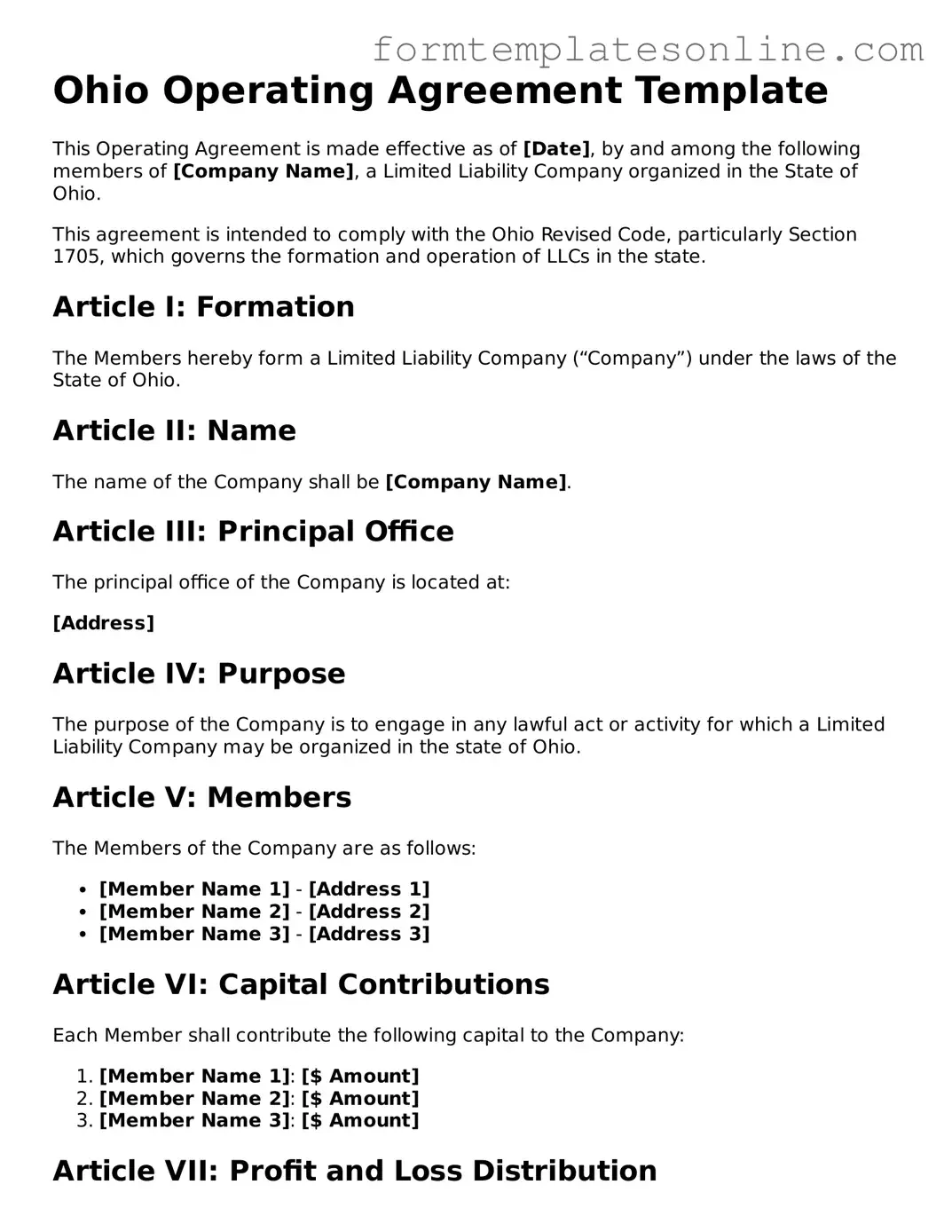Ohio Operating Agreement Template
This Operating Agreement is made effective as of [Date], by and among the following members of [Company Name], a Limited Liability Company organized in the State of Ohio.
This agreement is intended to comply with the Ohio Revised Code, particularly Section 1705, which governs the formation and operation of LLCs in the state.
Article I: Formation
The Members hereby form a Limited Liability Company (“Company”) under the laws of the State of Ohio.
Article II: Name
The name of the Company shall be [Company Name].
Article III: Principal Office
The principal office of the Company is located at:
[Address]
Article IV: Purpose
The purpose of the Company is to engage in any lawful act or activity for which a Limited Liability Company may be organized in the state of Ohio.
Article V: Members
The Members of the Company are as follows:
- [Member Name 1] - [Address 1]
- [Member Name 2] - [Address 2]
- [Member Name 3] - [Address 3]
Article VI: Capital Contributions
Each Member shall contribute the following capital to the Company:
- [Member Name 1]: [$ Amount]
- [Member Name 2]: [$ Amount]
- [Member Name 3]: [$ Amount]
Article VII: Profit and Loss Distribution
Profits and losses shall be allocated to the Members as follows:
- [Member Name 1]: [%]
- [Member Name 2]: [%]
- [Member Name 3]: [%]
Article VIII: Management
The management of the Company shall be vested in:
Article IX: Indemnification
The Company shall indemnify any Member or Manager to the full extent permitted under the laws of the State of Ohio.
Article X: Amendments
This Operating Agreement may be amended only by a written agreement signed by all Members.
Article XI: Dissolution
The Company may be dissolved upon the occurrence of any of the following:
- Unanimous agreement of the Members.
- As required by law.
IN WITNESS WHEREOF:
The undersigned have executed this Operating Agreement as of the effective date first above written.
_______________________________
[Member Name 1]
_______________________________
[Member Name 2]
_______________________________
[Member Name 3]
